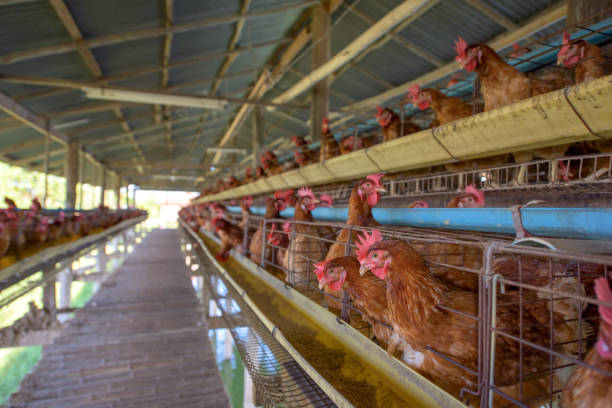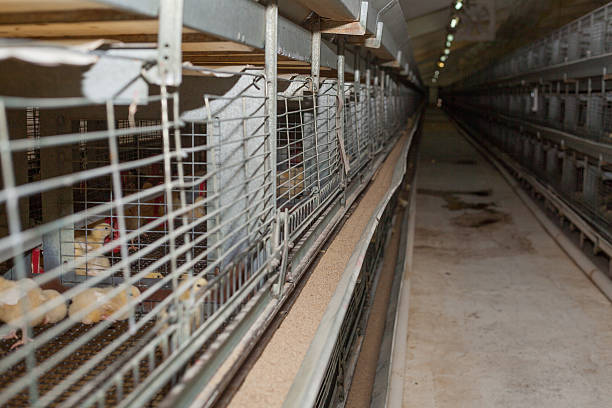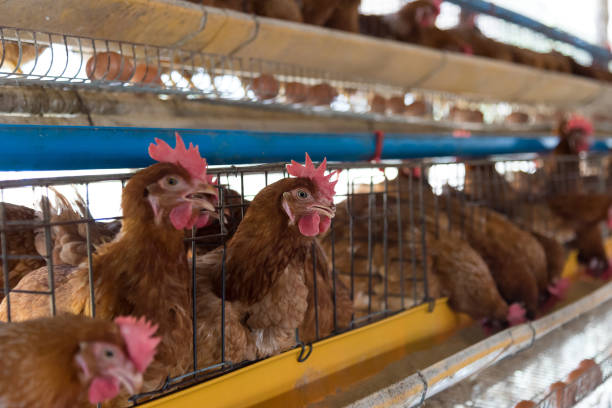Automating Water: A 100,000 Broiler Chicken Drinking System for Kenyan Farmers
Automating Water: A 100,000 Broiler Chicken Drinking System for Kenyan Farmers

For Kenyan poultry farmers aiming to scale up their broiler operations, providing water efficiently is a cornerstone of success. Watering 100,000 broiler chickens manually is not only incredibly labor-intensive but also prone to inconsistencies leading to uneven growth, disease outbreaks, and ultimately, reduced profitability. Automating the watering process is a logical step for streamlining farm management, ensuring optimal broiler health, and maximizing production. This article explores the key components and benefits of implementing an automated drinking system specifically designed for a large-scale broiler farm in Kenya.
Understanding the Water Needs of Broiler Chickens
Before diving into the specifics of automated systems, it’s crucial to understand the water requirements of broiler chickens. Water intake directly affects feed consumption, digestion, and overall health. The amount of water a broiler drinks depends on several factors including age, breed, ambient temperature, humidity, and feed composition. In hot Kenyan climates, broilers will naturally drink more to regulate their body temperature.
Generally, a broiler chicken consumes approximately twice as much water as feed. For instance, if a 7-week-old broiler consumes 150 grams of feed per day, it will likely drink around 300 ml of water. With 100,000 birds, the daily water demand can easily reach 30,000 liters or more! Manually providing this volume of water accurately and consistently is nearly impossible, highlighting the necessity for automation.
Benefits of Automated Broiler Drinking Systems
Automated broiler drinking systems offer a multitude of advantages that directly translate to improved farm efficiency and profitability:
Reduced Labor Costs: Manual watering requires constant monitoring and refilling of drinkers. An automated system frees up significant labor resources, allowing farmers to focus on other crucial aspects of farm management such as feeding, biosecurity, and health monitoring.
Consistent Water Supply: Automated systems ensure a continuous and consistent supply of fresh, clean water to all birds. This eliminates the fluctuations in water availability that can occur with manual watering, promoting uniform growth and reducing stress.
Improved Hygiene: Automated systems minimize the risk of water contamination. Closed systems reduce exposure to dirt, manure, and other pathogens, which is especially important in preventing the spread of diseases like E. coli and Salmonella. Furthermore, some systems incorporate medicators, facilitating the easy and accurate administration of medications and vaccines through the drinking water.
Reduced Water Wastage: Manual watering often leads to significant water wastage due to spillage and evaporation. Automated systems, particularly nipple drinkers, minimize wastage, conserving water resources and reducing water bills. This is particularly important in regions experiencing water scarcity.
Better Feed Conversion Ratio (FCR): Consistent access to clean water improves feed digestion and nutrient absorption, leading to a better FCR. Broilers can convert feed into meat more efficiently, resulting in faster growth and higher yields.
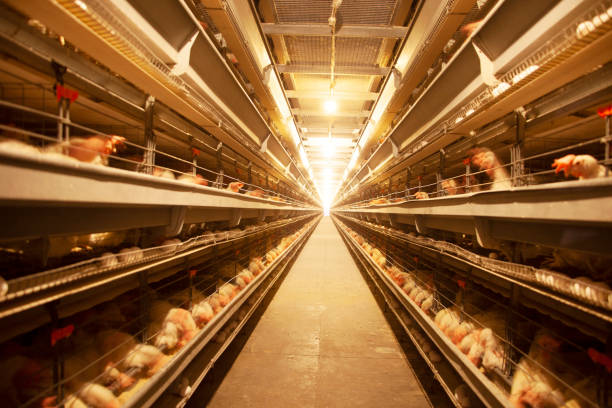
Improved Broiler Health and Welfare: A constant supply of clean water minimizes stress and promotes healthy growth. Reduced stress levels also improve the birds’ immune systems, making them less susceptible to diseases.
Data Collection and Monitoring: Some advanced automated systems come equipped with sensors and data loggers that track water consumption patterns. This data can provide valuable insights into broiler health and performance, allowing farmers to identify potential problems early on.
Components of an Automated Broiler Drinking System
A typical automated broiler drinking system for a 100,000-bird farm in Kenya consists of the following key components:
Water Source and Storage: The system requires a reliable water source, such as a borehole, well, or municipal water supply. The water should be tested regularly to ensure its quality and potability. A storage tank with sufficient capacity (e.g., 50,000 liters or more, depending on daily consumption and water source reliability) is essential to ensure a constant supply of water, even during periods of low water availability.
Water Filtration System: Protecting the drinking system, and ultimately the birds, starts with a good filtration system. A multi-stage filtration system, including sediment filters and carbon filters, removes impurities, chlorine, and other contaminants from the water. This ensures the water is clean and safe for consumption, prolonging the lifespan of the drinking system and reducing the risk of disease.
Pressure Regulator: Water pressure is critical for proper functioning of the drinking system. A pressure regulator maintains a consistent water pressure throughout the system, regardless of fluctuations in the water source pressure. This ensures all drinkers function optimally and prevents leaks or damage to the system.
Medicators (Optional): Medicators are proportioning devices that automatically dispense medication or supplements into the drinking water at a pre-set ratio. This allows for the easy and accurate administration of treatments, saving time and labor.
Drinking Lines and Nipples: The core of the system consists of a network of PVC or galvanized steel pipes running the length of the broiler house, along which nipple drinkers are installed at regular intervals. Nipple drinkers are the most common type of drinker used in automated systems, as they provide a clean and efficient way for broilers to access water. There are two main types of nipple drinkers: side-action and vertical-action. Side-action nipples require the broiler to peck the nipple from the side, while vertical-action nipples require the broiler to peck the nipple from below. The choice depends on bird age and farmer preference. The height of the drinker lines should be adjustable to accommodate the changing size of the broilers as they grow.
End-of-Line Flush System: Sediment and biofilm can accumulate in the drinking lines over time. An end-of-line flush system allows for the regular flushing of the lines, removing these build-ups and maintaining water quality.
Control Panel and Automation: Some systems have advanced control panels that monitor water usage, allowing for precise adjustment of the system and early detection of leaks or other issues. They can also integrate with other farm management systems for comprehensive data collection and analysis.
Choosing the Right System for Kenyan Conditions
Selecting the appropriate automated drinking system for a Kenyan broiler farm requires careful consideration of several factors:
Climate: Kenya’s hot climate necessitates a robust system that can withstand high temperatures and humidity. The system should be designed to minimize water evaporation and keep the water cool. Insulated water tanks and shading of the drinking lines can help to mitigate the effects of the heat.
Water Quality: The quality of the water source is a critical factor. If the water source is known to be high in minerals or contaminants, a more advanced filtration system may be required. Regular water testing is essential to ensure the system is effectively treating the water.
Broiler Breed: Different broiler breeds may have different water requirements and preferences. It’s important to choose a drinking system that is suitable for the specific breed being raised.
Farm Size and Layout: The size and layout of the broiler house will influence the design and installation of the drinking system. A larger farm will require a more extensive system with larger water storage capacity and more drinking lines.
Budget: The cost of an automated drinking system can vary significantly depending on the complexity of the system and the quality of the components. It’s important to choose a system that is within the farmer’s budget while still meeting their needs and providing long-term reliability.
Power Supply: Automated watering systems often rely on electricity to power water pumps, medicators, and control panels. Kenyan farmers need to consider their access to reliable electricity. Solar powered systems or backup generators can provide alternatives in areas with unreliable power grids.
Installation and Maintenance of Automated Systems
Proper installation is crucial for the efficient and reliable operation of an automated drinking system. It’s highly recommended that farmers engage with experienced technicians who are familiar with installing poultry equipment to ensure proper setup and configuration. The technician can advise on the optimal placement of the drinking lines, the correct water pressure settings, and the proper programming of the control panel.
Regular maintenance is also essential to prolong the lifespan of the system and prevent problems. This includes:
Regularly inspecting the drinking lines and nipples for leaks or damage.
Flushing the lines at least once a week to remove sediment and biofilm.
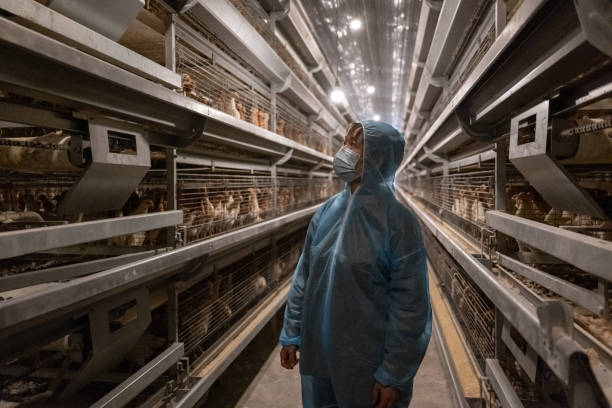
Cleaning the water filter regularly and replacing the filter cartridges as needed.
Checking the water pressure and adjusting the regulator as necessary.
Servicing the medicator and replacing the seals as needed.
Investing in an automated broiler drinking system represents a significant step towards modernizing Kenyan poultry farms. The benefits are multifaceted – reduced labor, improved water efficiency, healthier birds, and ultimately, increased profitability. By carefully considering the factors outlined in this article and working with reputable suppliers like Livi Machinery, Kenyan farmers can select and implement an automated drinking system that will transform their broiler operations and contribute to a more sustainable and thriving poultry industry. With a combination of sound planning, quality equipment, and consistent maintenance, automating water is an investment that pays for itself many times over.



